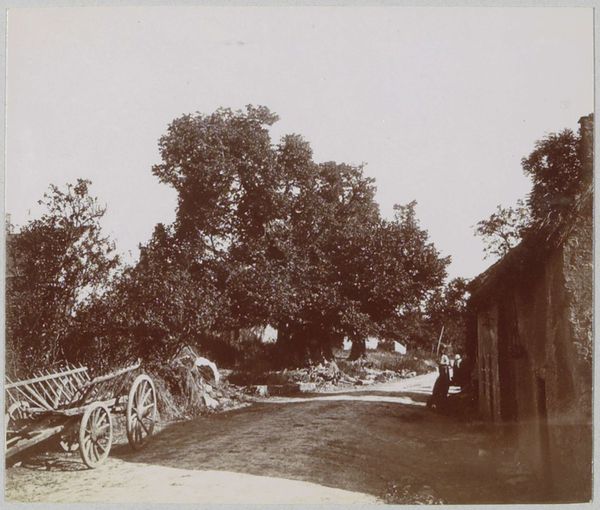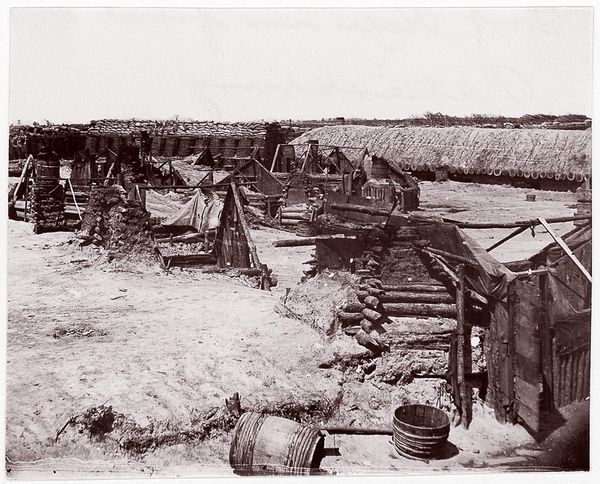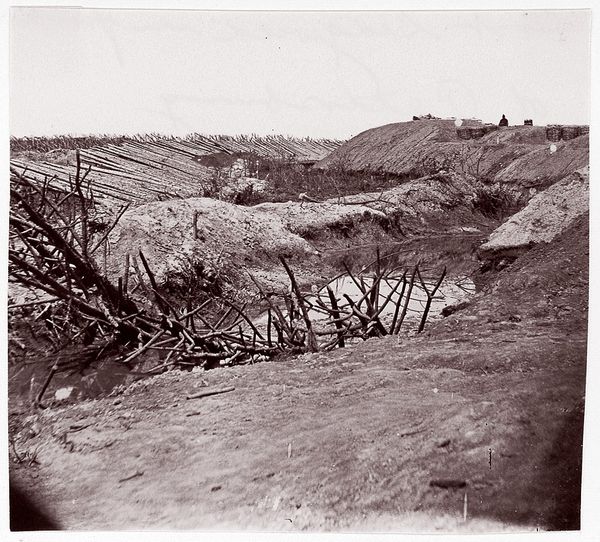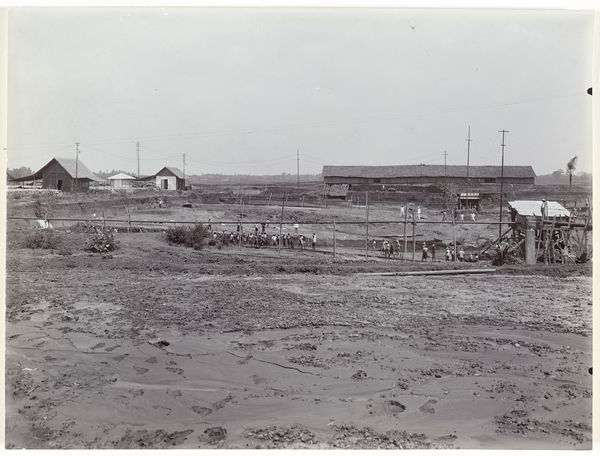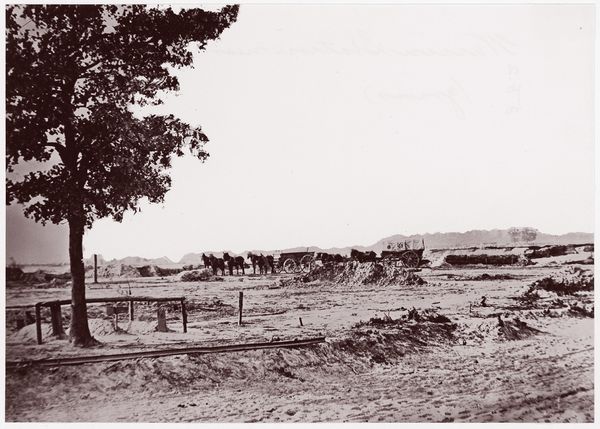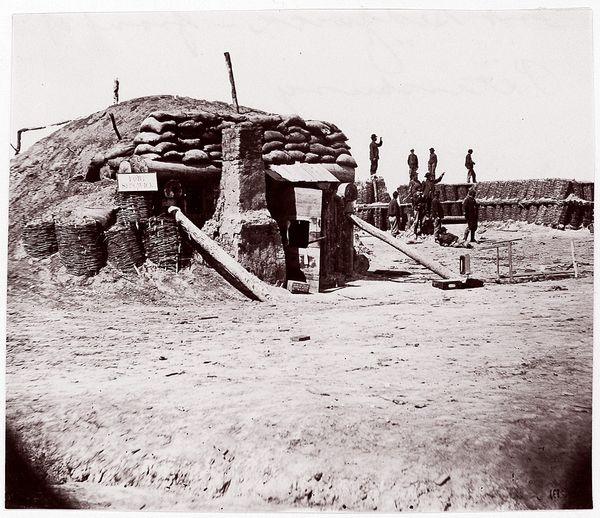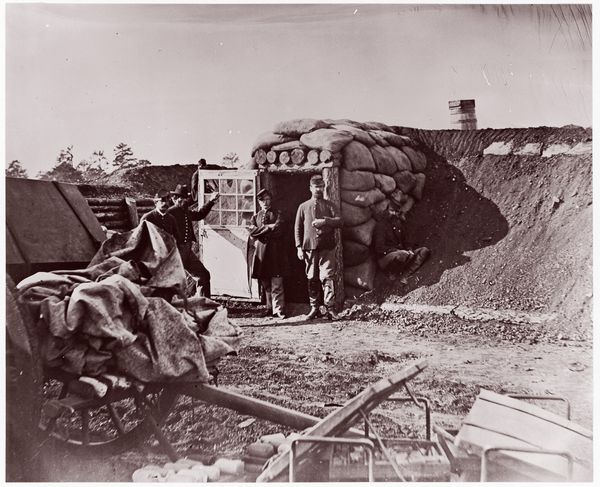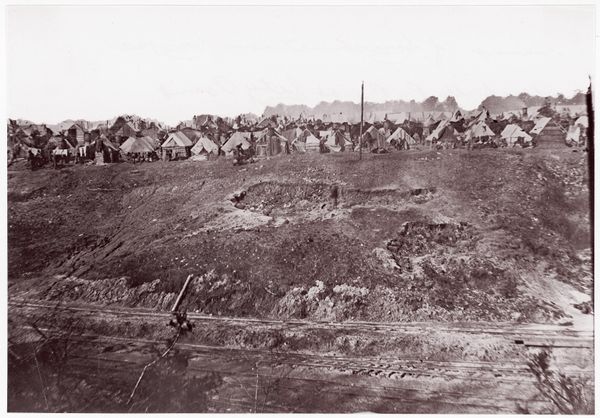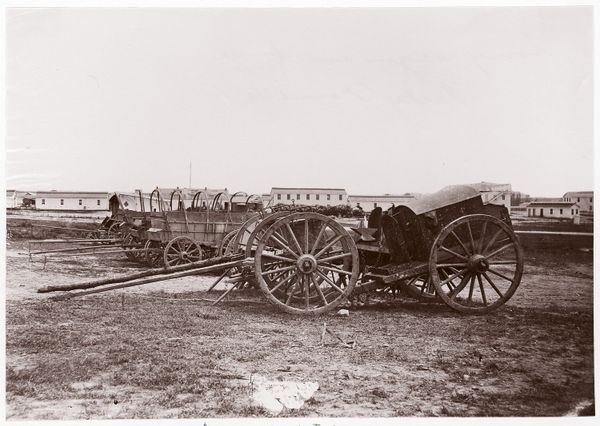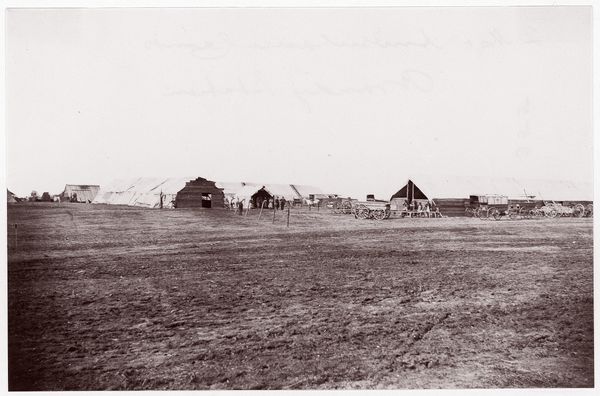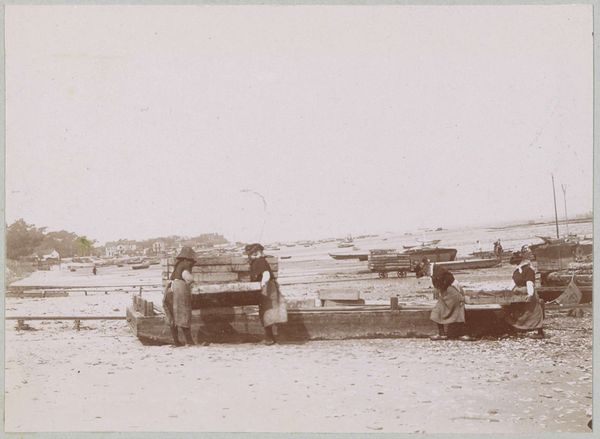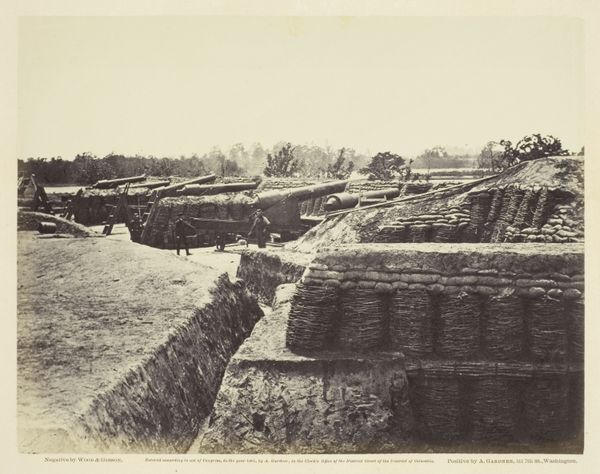
photography, gelatin-silver-print
#
black and white photography
#
war
#
landscape
#
photography
#
soldier
#
gelatin-silver-print
#
monochrome photography
#
history-painting
#
monochrome
Copyright: Public Domain
Curator: Standing before us is "Fort Brady, James River," a gelatin silver print created in 1864 by Andrew Joseph Russell, currently held at the Metropolitan Museum of Art. My initial impression is one of profound stillness, a kind of eerie calm before, or perhaps after, the storm. Editor: Yes, a potent stillness, and pregnant with history. Russell's image documents a key site during the American Civil War, specifically along the James River. It presents an industrialized, masculinized, landscape of destruction frozen in time. Curator: The light and shadow really guide my eye. It's interesting how the details become clearer the longer I look. Those cannons dominate the frame but, notice the slight blurring; is it from movement or simply an early photographic technique? Editor: The slight blur speaks to the limitations of photography at that time, but it also evokes a sense of tension—the ever-present threat of violence during the war. What I find most compelling is the constructed nature of the scene itself. The meticulously built fortifications speak volumes about strategy and the exploitation of land and labor. Who were these soldiers, what motivated them, and what costs were inflicted? These images are never "just" photographs. Curator: You're right, these were calculated constructions. War as an act of staging, really. And there is something terribly fascinating about witnessing, across all these years, a tableau of war. Is it a longing, a fascination or are we just accustomed to violence? Editor: It's also vital to acknowledge how photographs like these contributed to shaping public perceptions of the war. The black and white medium simplifies complex narratives, often glossing over the lived realities of marginalized groups. Enslaved people in this instance would have been forced to build these fortifications. Their presence, their contributions are systematically erased from these records. Curator: The act of forgetting is also violent. These grey tones certainly add an immense weight. Editor: Indeed. Examining this gelatin silver print allows us to contemplate the intertwined relationships between photography, power, and historical memory. It invites us to reflect on whose stories are being told and, crucially, whose are being omitted. Curator: So powerfully put. It’s haunting how art can whisper truth across time. Editor: Exactly. This work invites us to ask hard questions, ensuring a more responsible engagement with our collective past.
Comments
No comments
Be the first to comment and join the conversation on the ultimate creative platform.
